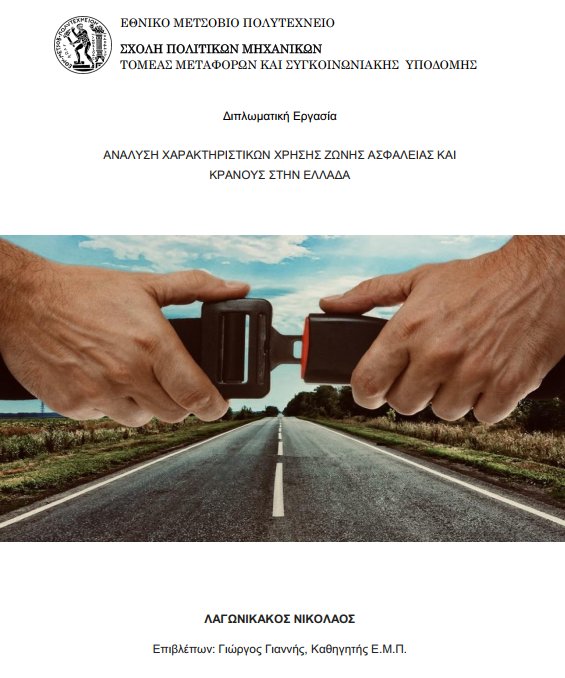
The objective of this study is the analysis of seatbelt and helmet use characteristics in Greece. The data used for the statistical analysis were collected from field observations during November-December 2021 in Greece and are related to seatbelt and helmet use, driver’s age and gender, the type of vehicle, the weather conditions, the time period and the road type in three areas (Athens, Thessaloniki and Larisa). The collected sample for seatbelt use corresponds to 8577 drivers and 377 front-seat passengers, while the respective sample for helmet use concerns 6981 drivers and 296 passengers. In total, three binary logistic regression models were developed with seatbelt use by drivers, seatbelt use by front-seat passengers and helmet use by drivers as the dependent variables of each model respectively. Regarding the statistical models of seatbelt and helmet use by drivers, the results demonstrated that female drivers are more likely to use their seatbelt
compared to male drivers. With regard to age, middle-aged and elderly drivers present lower probabilities of using a seatbelt while driving, compared to young drivers. Similarly, the probability of using a helmet is lower for elderly drivers compared to young drivers. In terms of road type, the probability of using a seatbelt and a helmet while driving on rural and urban roads is lower compared to motorways. It was also revealed that the probability of using a seatbelt in a van and other vehicle types is lower than passenger cars. Moreover, in adverse weather conditions the probability of using a helmet is lower in comparison with good weather conditions. On weekends, the probability of wearing a protective helmet increases. Lastly, with regard to the statistical model of front-passenger seatbelt use, it
was revealed that the examined independent variables (vehicle type, area, road type) affect the dependent variable in a similar manner as the signs of the statistically significant coefficients are identical with the statistical model of seatbelt use by drivers. Moreover, it was revealed that on weekends, the probability of wearing a seatbelt is higher than weekdays.
compared to male drivers. With regard to age, middle-aged and elderly drivers present lower probabilities of using a seatbelt while driving, compared to young drivers. Similarly, the probability of using a helmet is lower for elderly drivers compared to young drivers. In terms of road type, the probability of using a seatbelt and a helmet while driving on rural and urban roads is lower compared to motorways. It was also revealed that the probability of using a seatbelt in a van and other vehicle types is lower than passenger cars. Moreover, in adverse weather conditions the probability of using a helmet is lower in comparison with good weather conditions. On weekends, the probability of wearing a protective helmet increases. Lastly, with regard to the statistical model of front-passenger seatbelt use, it
was revealed that the examined independent variables (vehicle type, area, road type) affect the dependent variable in a similar manner as the signs of the statistically significant coefficients are identical with the statistical model of seatbelt use by drivers. Moreover, it was revealed that on weekends, the probability of wearing a seatbelt is higher than weekdays.
| ID | ad134 |
| Presentation | |
| Full Text | |
| Tags |







